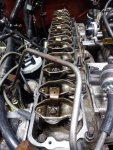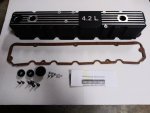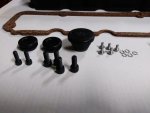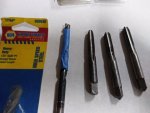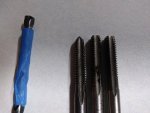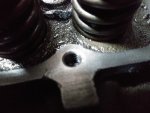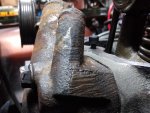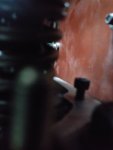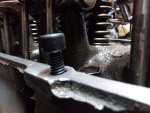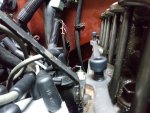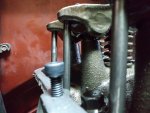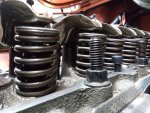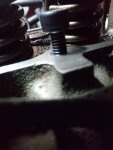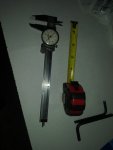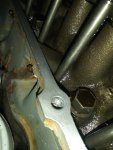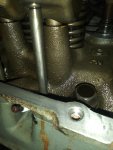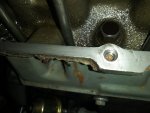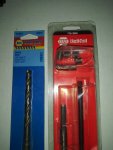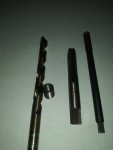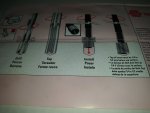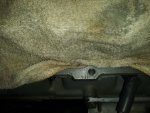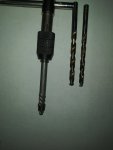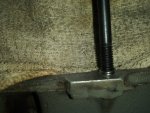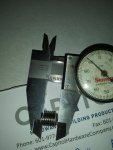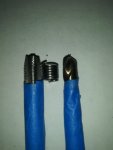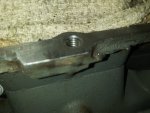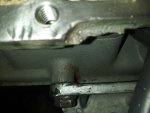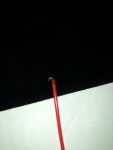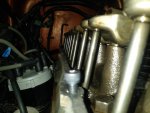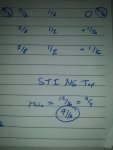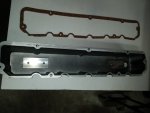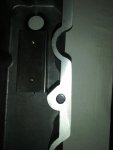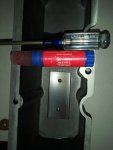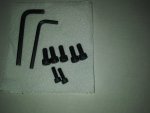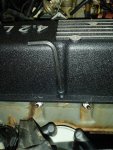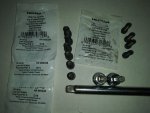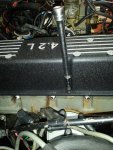- City
- Biloxi
- State
- MS
I did some more diagnosis, trying to figure out my "slight surge" at light cruising speeds/throttle input.
With the vacuum advance disconnected, the problem goes away 90%. The issue is still there, just not as noticeable. So, I was thinking, maybe the vacuum advance diaphragm was leaking, or the linkage binding up, maybe?
This is the vacuum advance module, on the side of the distributor:
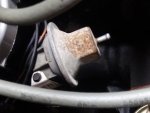
The OEM tag that is on it:
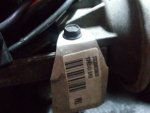
Basically, engine vacuum, either ported or manifold (depends on year/emissions stuff, check your under hood sticker), pulls on the diaphragm advancing the timing as vacuum increases. This is kind of when I am having my issue, right off idle, into more of a light throttle mode, when the vacuum is increasing, should be increasing the timing.
So, I hooked up my little hand held vacuum pump to the vacuum advance module:
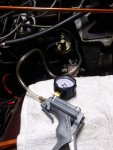
Put 20" of vacuum on it:
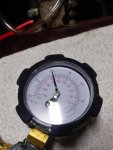
The diaphragm held the vacuum for 20 minutes. Vacuum never started to drop, I finally just released the vacuum. So, I am assuming no vacuum leak here.
I pulled off the distributor cap and checked how smoothly the vacuum advance arm was moving. It moves really smooth, I don't think anything is binding up. I was hoping maybe the inside of the distributor had some debris inside, causing an issue, but nope, it is clean.
No vacuum applied, arm rests here:
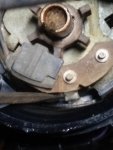
Full vacuum applied, arm moves to here:
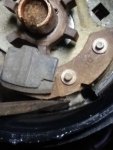
Not the best pictures, but the arm moves nice and smooth throughout its entire range of motion. No skips, bumps, erratic movement, nice fluid stroke.
So, I do not think my issue is with the vacuum advance module. This was an easy thing to check. I will probably hook up a vacuum gauge inside the cab to check vacuum while the engine does its "surge" thing. It will only do it under load, part throttle cruising. Idle, hard acceleration, stationary throttle increases, no problems, Starts up and turns off fine.
After looking at the vacuum, I will probably check the fuel pump pressure/discharge capacity. Then, check the carb again. Just kind of funny how this problem just happened, not right after I rebuilt the carb, who knows? Maybe I dropped some old RTV down the carb throat when I was messing with the valve cover re-seal?
Speaking of valve cover re-seal, fail
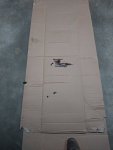
Yep, the plastic valve cover started to leak, but only at the back, near the firewall. I am almost wondering if the mushy/shot motor mounts/transmission mounts allowed enough engine movement for the valve cover to hit the heater box stud, jarring the seal loose? Before I proceed with either resealing/replacing the valve cover, I am going to change the engine/transmission mounts. When I was draining/refilling the transfer case I realized that I could actually pick up/lift the entire engine/transmission/transfer case assembly!!! Time for some new mounts.
I was talking about how the vacuum advance is run off either ported/or manifold vacuum, this is how my '85 California emissions model is run:
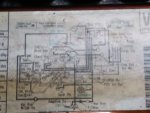
Hard to see, but I have a line that runs straight off the intake manifold, to a small vacuum reservoir, through a forward delay valve, to the adaptive switch. Before the adaptive switch/reservoir/delay valve, the manifold vacuum line "T's" off straight to the vacuum advance module.
So, I am getting full manifold vacuum to the vacuum advance at idle. This is probably due to the under dash computer controlling some of the timing.
IIRC, I set my timing at 8 degrees advance:
1) engine RPM at 1600
2) vacuum advance module disconnected/vacuum line plugged
3) adaptive switch electrical connector unplugged.
When you hook everything back up, I can't remember what the base timing actually is at idle. But, it is higher then the initial 8 degrees. So, you have base timing, plus mechanical advance, plus vacuum advance, PLUS the computer controlling some of the timing.
On the computer affecting the timing, this is why when people do the "nutter bypass" you have to remove one wire from the ignition control module. This is how the under dash computer controls some aspects of the timing, via the ICM which talks to the pick up coil assembly inside the distributor. I am assuming the computer is using the pick up coil as a rudimentary "cam position sensor"?
After I check out the possibility of any fuel issues, I will recheck all the timing stuff, and map out the mechanical/vacuum advance curves.
That's it for now
With the vacuum advance disconnected, the problem goes away 90%. The issue is still there, just not as noticeable. So, I was thinking, maybe the vacuum advance diaphragm was leaking, or the linkage binding up, maybe?
This is the vacuum advance module, on the side of the distributor:

The OEM tag that is on it:

Basically, engine vacuum, either ported or manifold (depends on year/emissions stuff, check your under hood sticker), pulls on the diaphragm advancing the timing as vacuum increases. This is kind of when I am having my issue, right off idle, into more of a light throttle mode, when the vacuum is increasing, should be increasing the timing.
So, I hooked up my little hand held vacuum pump to the vacuum advance module:

Put 20" of vacuum on it:

The diaphragm held the vacuum for 20 minutes. Vacuum never started to drop, I finally just released the vacuum. So, I am assuming no vacuum leak here.
I pulled off the distributor cap and checked how smoothly the vacuum advance arm was moving. It moves really smooth, I don't think anything is binding up. I was hoping maybe the inside of the distributor had some debris inside, causing an issue, but nope, it is clean.
No vacuum applied, arm rests here:

Full vacuum applied, arm moves to here:

Not the best pictures, but the arm moves nice and smooth throughout its entire range of motion. No skips, bumps, erratic movement, nice fluid stroke.
So, I do not think my issue is with the vacuum advance module. This was an easy thing to check. I will probably hook up a vacuum gauge inside the cab to check vacuum while the engine does its "surge" thing. It will only do it under load, part throttle cruising. Idle, hard acceleration, stationary throttle increases, no problems, Starts up and turns off fine.
After looking at the vacuum, I will probably check the fuel pump pressure/discharge capacity. Then, check the carb again. Just kind of funny how this problem just happened, not right after I rebuilt the carb, who knows? Maybe I dropped some old RTV down the carb throat when I was messing with the valve cover re-seal?
Speaking of valve cover re-seal, fail


Yep, the plastic valve cover started to leak, but only at the back, near the firewall. I am almost wondering if the mushy/shot motor mounts/transmission mounts allowed enough engine movement for the valve cover to hit the heater box stud, jarring the seal loose? Before I proceed with either resealing/replacing the valve cover, I am going to change the engine/transmission mounts. When I was draining/refilling the transfer case I realized that I could actually pick up/lift the entire engine/transmission/transfer case assembly!!! Time for some new mounts.
I was talking about how the vacuum advance is run off either ported/or manifold vacuum, this is how my '85 California emissions model is run:

Hard to see, but I have a line that runs straight off the intake manifold, to a small vacuum reservoir, through a forward delay valve, to the adaptive switch. Before the adaptive switch/reservoir/delay valve, the manifold vacuum line "T's" off straight to the vacuum advance module.
So, I am getting full manifold vacuum to the vacuum advance at idle. This is probably due to the under dash computer controlling some of the timing.
IIRC, I set my timing at 8 degrees advance:
1) engine RPM at 1600
2) vacuum advance module disconnected/vacuum line plugged
3) adaptive switch electrical connector unplugged.
When you hook everything back up, I can't remember what the base timing actually is at idle. But, it is higher then the initial 8 degrees. So, you have base timing, plus mechanical advance, plus vacuum advance, PLUS the computer controlling some of the timing.
On the computer affecting the timing, this is why when people do the "nutter bypass" you have to remove one wire from the ignition control module. This is how the under dash computer controls some aspects of the timing, via the ICM which talks to the pick up coil assembly inside the distributor. I am assuming the computer is using the pick up coil as a rudimentary "cam position sensor"?
After I check out the possibility of any fuel issues, I will recheck all the timing stuff, and map out the mechanical/vacuum advance curves.
That's it for now



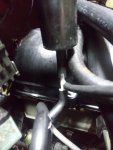
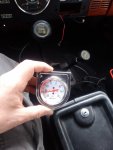
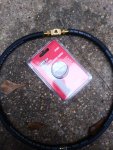
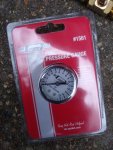
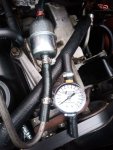
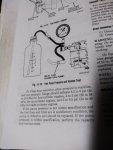
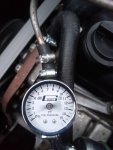
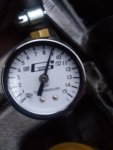
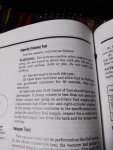
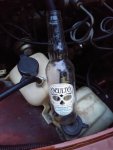
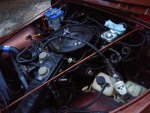
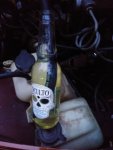
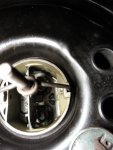
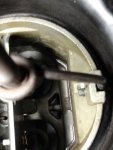
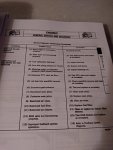
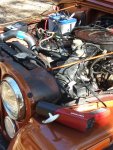
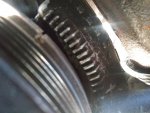
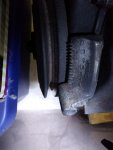

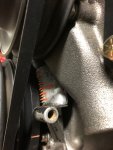
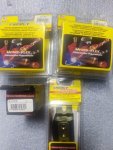
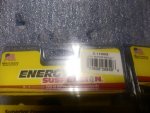
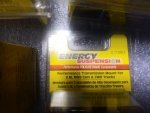
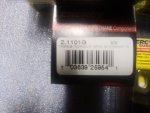
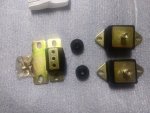
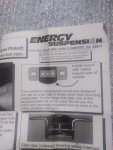
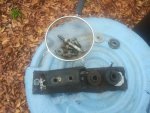
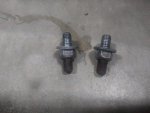
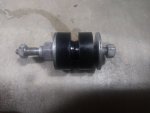
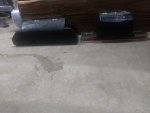
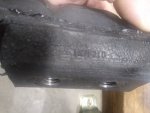
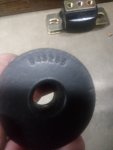

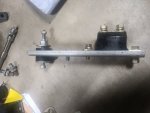
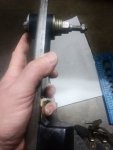
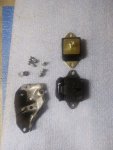
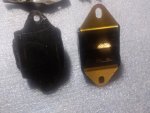
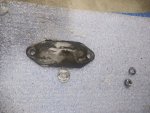
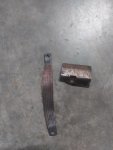

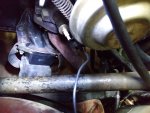
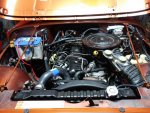
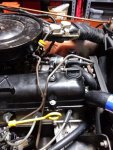
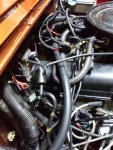
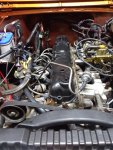
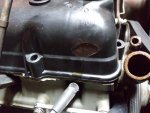
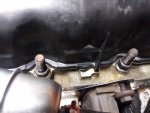
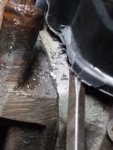
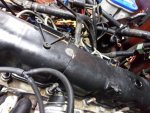
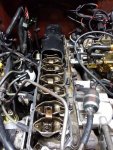
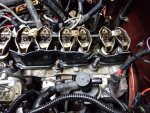
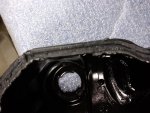
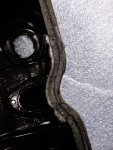
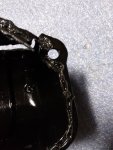
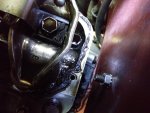
 Not quite. IMO, it proves the plastic is never worth reinstalling. Suppose it didn't ever leak but you needed to get in there for maintenance work. You would have had to break it just the same. That's not acceptable to me
Not quite. IMO, it proves the plastic is never worth reinstalling. Suppose it didn't ever leak but you needed to get in there for maintenance work. You would have had to break it just the same. That's not acceptable to me 
